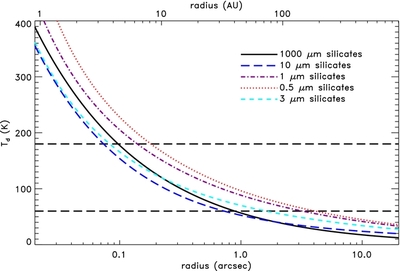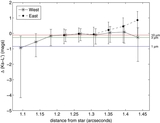Image Details

Caption: Figure 9.
Equilibrium disk temperature vs. distance from the star, for several different silicate grain sizes. See the text for methodology. The horizontal dashed lines represent temperature constraints of 179 K and 57 K from Moór et al. (2011b). Given that we have observational evidence for the predicted gap at ~1'', we can independently constrain the dust grain sizes to be ~3 μm for astronomical silicates.
Copyright and Terms & Conditions
© 2012. The American Astronomical Society. All rights reserved.












